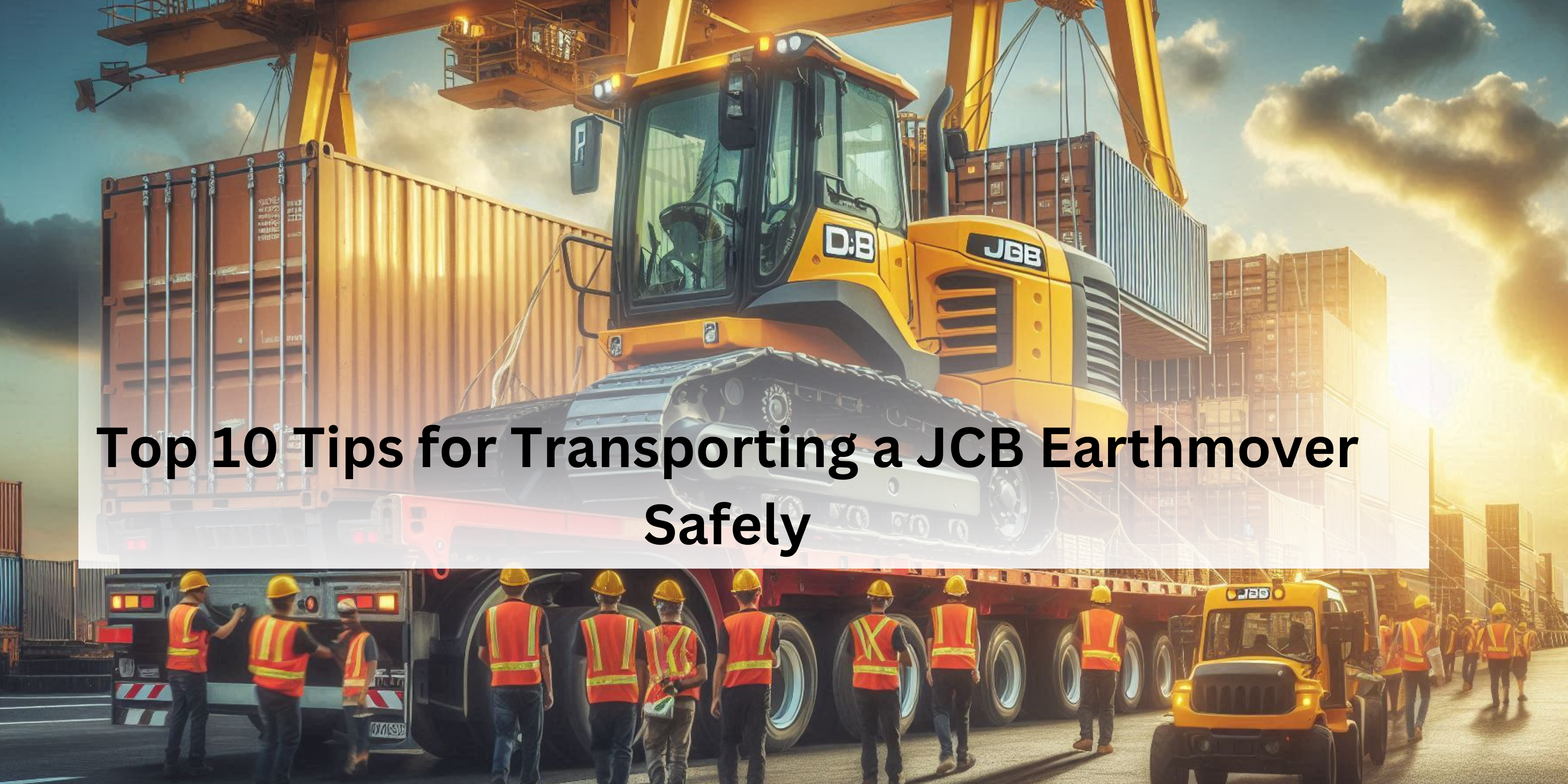
Transporting a JCB earthmover can be tricky. It’s heavy and large, so you need to be careful. If you don’t take the right steps, there could be accidents or damage.
Check the Size
- Measure the length, width, and height of the JCB earthmover.
- Make sure it will fit on the transport vehicle.
- As per a JCB authorized dealer, check if the transport vehicle is big enough for the earthmover.
- Don’t forget to measure the width of the tires, as they can add extra space.
- Ensure the height of the JCB is within legal road limits.
- Knowing the exact size helps avoid problems while loading and unloading.
- If the JCB is too big, you may need a bigger vehicle or a special permit.
Use the Right Trailer
- Choose a strong trailer that can carry the JCB’s weight.
- Make sure the trailer is wide enough for the earthmover.
- Check the trailer’s weight limit before loading.
- Use a low-loader trailer if the JCB is very tall or heavy.
- The trailer should have good brakes to handle the weight.
- Make sure the trailer is in good condition, with no broken parts.
- Ensure the trailer is stable and won’t tip over when moving.
- Double-check that the trailer’s axles are strong enough for the load.
Secure the Machine
- Use strong straps or chains to tie down the JCB.
- Attach the straps to solid points on the machine, like the frame.
- Make sure the straps are tight to stop the JCB from moving.
- Check the straps often to ensure they stay tight during transport.
- Use more than one strap to keep the machine stable.
- Don’t let the JCB shift or roll during the trip.
- If possible, use wheel chocks to stop the wheels from moving.
- Securing the JCB well helps prevent accidents and damage.
Check Tires
- Check the JCB’s tires before transporting it.
- Make sure they are fully inflated to the right pressure.
- Low air pressure can cause the tires to blow out during transport.
- Look for any damage or cracks on the tires.
- Replace any worn-out or damaged tires before moving.
- Check the tread depth to make sure the tires are safe.
- If the tires are not in good condition, the transport may be unsafe.
- Check the tire alignment to avoid uneven wear during the trip.
Lower the Boom
- Always lower the boom and bucket to the ground before transport.
- This prevents the boom from swinging during the move.
- Lowering the boom also reduces the risk of damage.
- Ensure the boom is fully lowered and locked in place.
- Keep the bucket flat on the ground to avoid it hitting anything.
- A lowered boom keeps the JCB stable while loading and unloading.
Remove Loose Parts
- Check for any loose parts on the JCB before moving.
- Remove tools, attachments, or extra equipment that could fall off.
- Ensure that everything on the machine is secured properly.
- Loose items can cause accidents or damage during transport.
- Store any removable parts safely inside the cab or another container.
- Check that the mirrors and lights are not broken or hanging loose.
- Tighten any loose bolts or screws on the machine.
Drive Carefully
- Always drive slowly and carefully when loading or unloading.
- Sudden moves can cause the JCB to tip or fall.
- Keep a steady speed to avoid shaking the machine.
- Be gentle with the brakes to stop smoothly.
- Avoid sharp turns that could unbalance the JCB.
- Use a spotter to guide you when loading or unloading.
- Make sure the ramp or surface is stable before moving the JCB.
Inspect Routes
- Check the roads before transporting the JCB.
- Look for any narrow areas or tight spaces.
- Make sure there are no low bridges or overhangs that could hit the machine.
- Watch for bumps or potholes that could damage the JCB.
- Check if there are any obstacles like trees or power lines.
- Make sure the road is clear of traffic or hazards.
- If the route is not safe, find another way.
Use a Ramp
- Always use a proper ramp to load or unload the JCB.
- The ramp should be strong enough to hold the weight of the machine.
- Make sure the ramp is wide enough for the JCB’s tires.
- Check that the ramp is placed securely and won’t slip.
- Use a smooth, even ramp to avoid tipping the JCB.
- Never use a ramp that is too steep.
- If the ramp is too steep, the JCB could lose control.
Get Help
- Don’t try to move the JCB alone; always ask for help.
- You can also contact the experts of JCB backhoe loader showroom
- Have enough people to guide and support you during the move.
- You may need extra help to load or unload the machine safely.
- Use spotters to watch the surroundings and guide you.
- More people can help check that everything is secure.
- Having help can prevent accidents and damage to the JCB.
- If needed, use equipment like cranes or forklifts for assistance.





